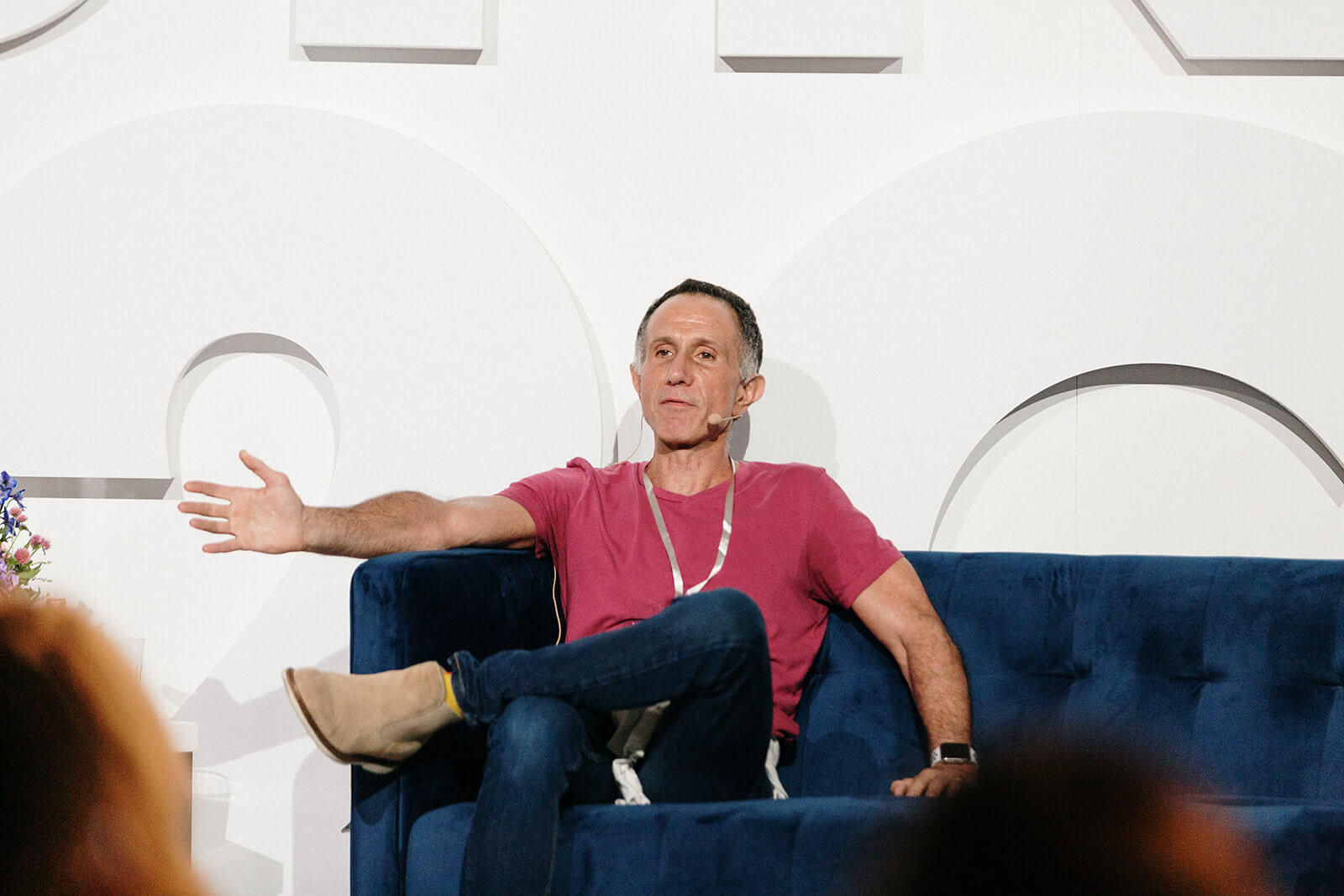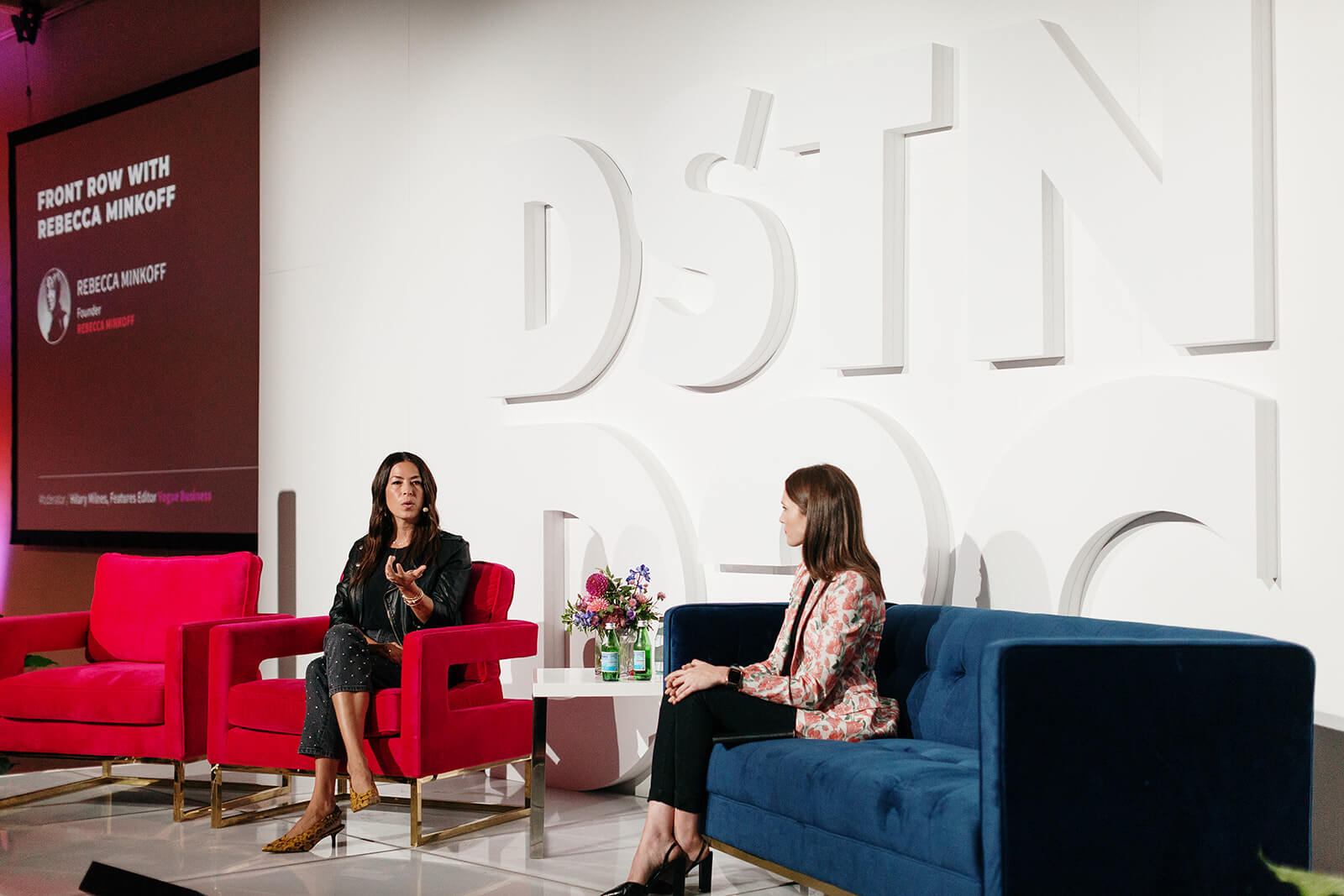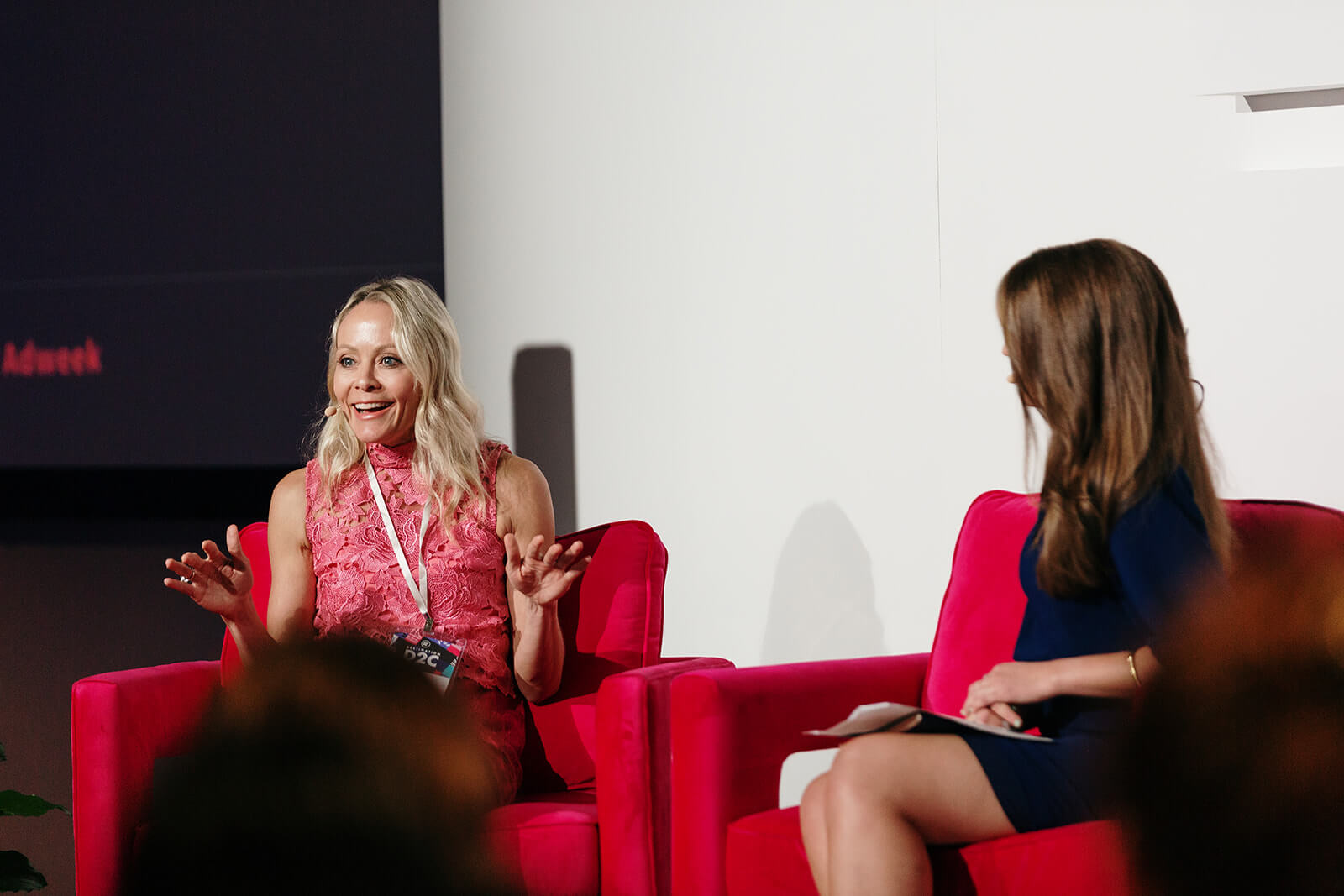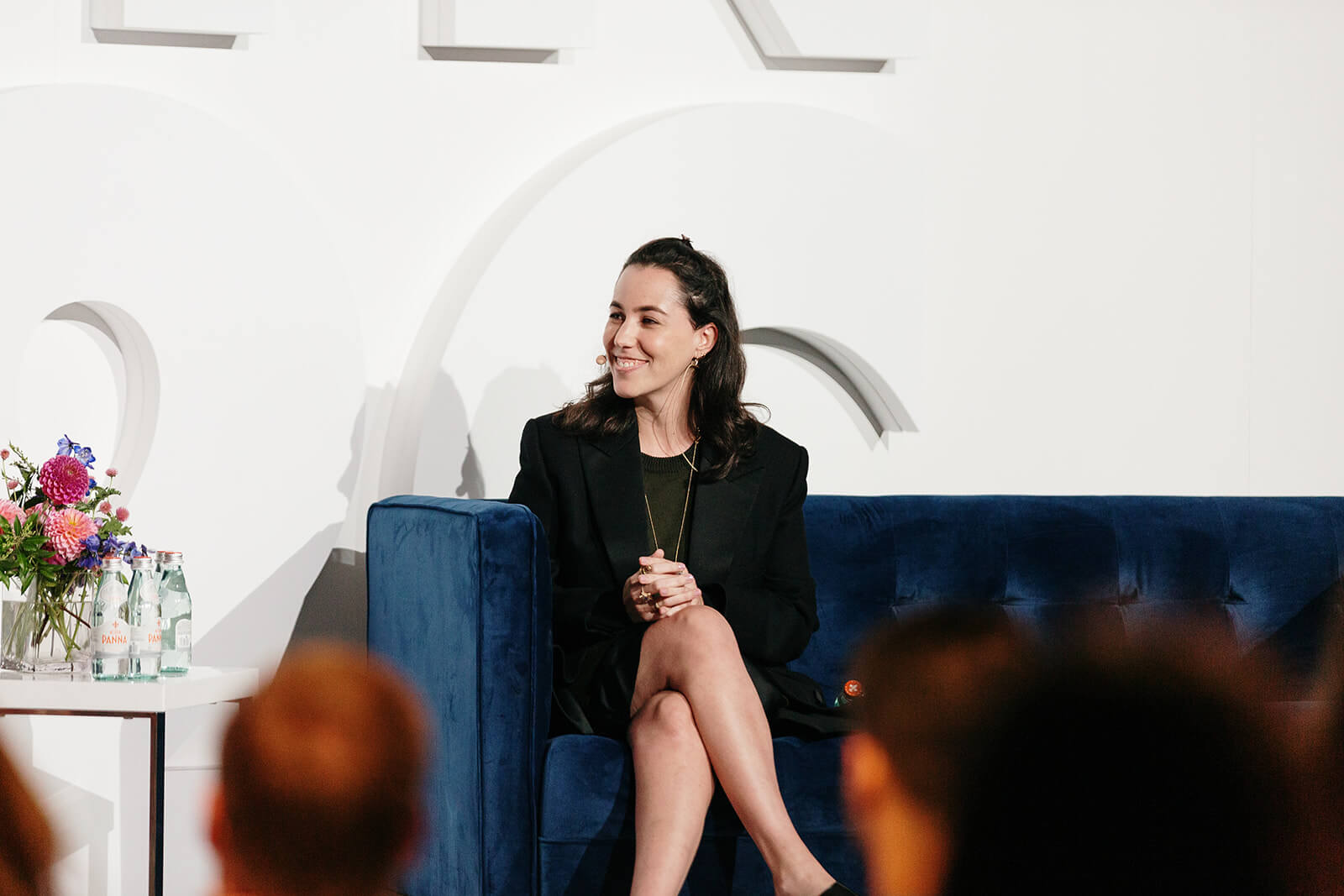When we planned Destination:D2C, we envisioned it as a meeting place for top direct-to-consumer brands and eCommerce industry leaders. We were so excited to see that vision fall into place on Sept. 12, as speakers including Rebecca Minkoff, Away’s Selena Kalvaria, Brooklinen’s Rich Fulop, Steve Madden’s Jeff Silverman, and more took the stage.
The undeniable theme of the day was how these brilliant brands create magical experiences for their customers. Here’s a round-up of the most important advice they dished out at Destination:D2C.
1. Build strong customer relationships and maintain them at any cost
Jeff Silverman, President of Global eCommerce at Steve Madden put it best when he said, “In 2019, brands without a direct [customer] relationship are in peril.” While it might sound dramatic, he explained how even a brand as massive as Steve Madden has completely revamped its online presence to be more agile and responsive to customer expectations.
 Jeff Silverman, President of Global eCommerce at Steve Madden
Jeff Silverman, President of Global eCommerce at Steve Madden
In the age of social media, any lapse in customer experience is detrimental to your brand. “Social media is a dangerous weapon,” according to Rich Fulop, Founder & CEO, Brooklinen. “Now everyone has a megaphone and they can broadcast screw-ups to everyone. So, it’s worth whatever cost to make it right.”
Fulop’s team is so attentive to customer experience that they once sent a set of bedsheets via Uber to a customer who had written after a shipping mix-up to say that the inconvenience would ruin Christmas.
2. Be real
The more brands get to know their customers, the more they’re learning that people are over traditional advertising — consumers are seeking authentic connections with brands. Hatch, a maternity fashion brand, has made a point of going beyond apparel to turn their physical locations into community hubs, where women can share experiences or trade doula recommendations while shopping. Hatch Founder and CEO Ariane Goldman shared that her brand is designed to support women at every stage of pregnancy and beyond. As she put it, to create authentic connections, you need to “show that you know what they’re going through — you’re not just selling stuff.”
 Rebecca Minkoff (left)
Rebecca Minkoff (left)
Similarly, Rebecca Minkoff reported that her customers are no longer responding to editorial content on social: “We see that the more real the better, the less polished the better,” she said. This shift is indicative of the trend toward stronger relationships between brands and customers — consumers want to know about the people behind the brand and what they stand for, not just the products.
3. Don’t be afraid to build something new
With many direct-to-consumer brands depending on VC funding, there’s often temptation to stick to tried and true growth methods. But, that’s not the spirit of the direct-to-consumer movement. These brands have done so well because they stepped outside the box of traditional retail and created something new.
Thinx CEO Maria Molland shared the challenges she faces selling a product that requires a change in firmly entrenched behaviors. Getting women to change course regarding how they deal with their periods is tricky business, so much so that investors cautioned Molland, telling her, “You always want to build the fastest car on the highway that’s already been built — you don’t want to be building the highway.” The warning didn’t deter her, and under her leadership, Thinx has grown into one of the top brands in the ecosystem.
 Maria Molland, CEO of Thinx
Maria Molland, CEO of Thinx
Rory Co-founder Rachel Blank has a similar outlook. With the rise of digital healthcare, and several companies entering the space, Rory’s biggest advantage has been its flexibility and willingness to stray from existing industry structures. “A lot of people say, ‘build it and they will come,’” she explained. “For us, it’s about creating a dialogue and building from there.”
4. Brand vs. branding
Now that we’re experiencing a renaissance of brands, it’s time to take a deeper look at what creates a strong brand that breeds emotional connection. As Away’s SVP Brand Selena Kalvaria put it, “Brand is driving love — you can’t just do that through a logo or the way you look.” The latter is branding, but brand is much harder to pin down.
Ryan Babenzien, CEO of Greats, explained that “building a brand takes time, and it’s not just about the product — it’s got to be more than that.” So, if it’s not about the logo, the design, or the product, then how do you build a brand?

Selena Kalvaria, SVP Brand at Away
For starters, according to Kalvaria, you have to take a holistic view of the industry you’re in. “What is the full travel lifestyle that Away could have a point of view on, that Away could transform?” she asked, explaining that Away is not a luggage brand, it’s a travel brand. Once you expand your area of impact to a lifestyle, there are more opportunities to let customers “live in your brand world.” You can do this through experiential retail, online, experience, and community-building.
“As a brand, our community is our lifeblood,” said Lauren Bosworth, the founder of women’s health brand Love Wellness. For her, the process of creating a memorable brand has centered around how her customer community feels. “I wanted these women to hold these products in their hands and to actually feel something, to feel good,” she said, explaining that Love Wellness’s focus on design isn’t just about a clean aesthetic — it’s about re-imagining how women feel about intimate health products and about their bodies.
5. Learn from your mistakes
As new brands take off seemingly overnight, becoming the unicorn businesses that dominate the headlines, small brands can get discouraged when success feels like a slow path. One theme that came up repeatedly at Destination:D2C was that even the biggest brands have made serious mistakes along the way.
To cap off this post, we’ll leave you with Rebecca Minkoff’s very real advice: “Try pushing it too far — you only learn these things by massive failure.”
We couldn’t have pulled off Destination:D2C without our amazing sponsors, Salesforce, Magento, BigCommerce, and many more. Thank you to everyone who made our first-ever conference possible.



